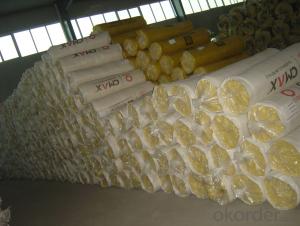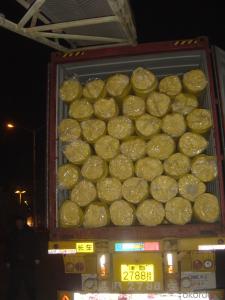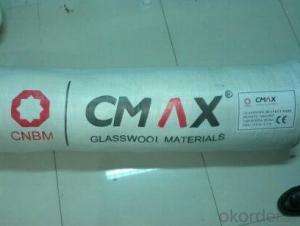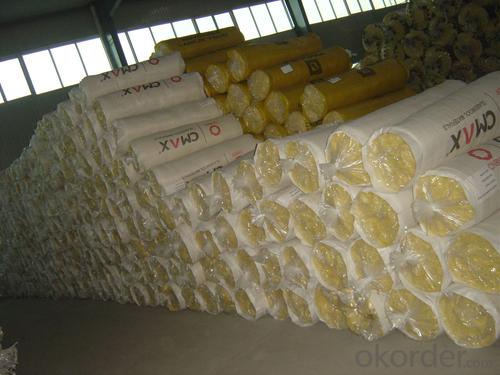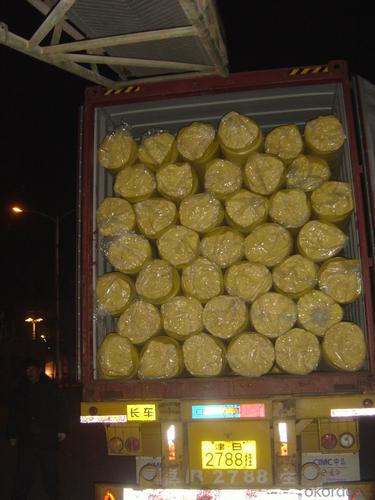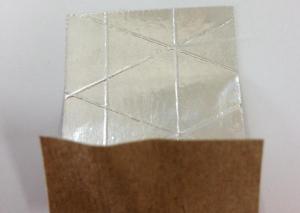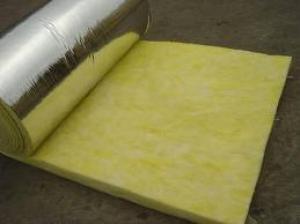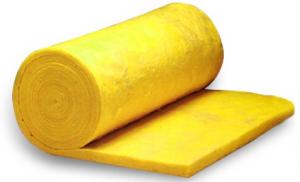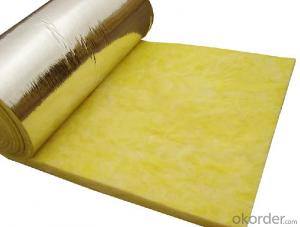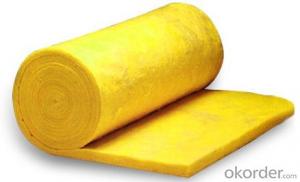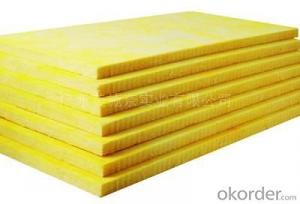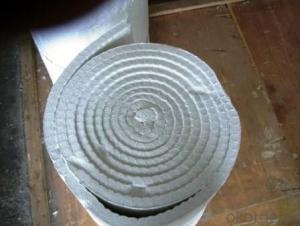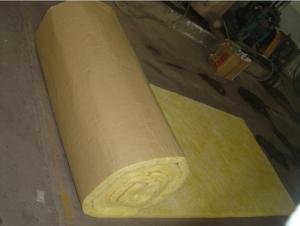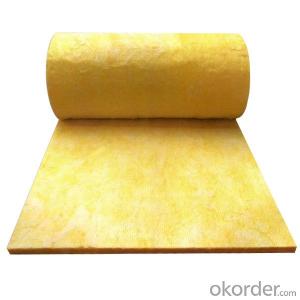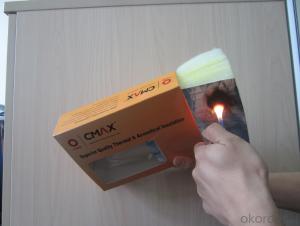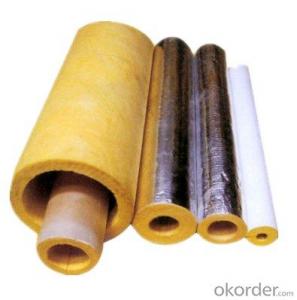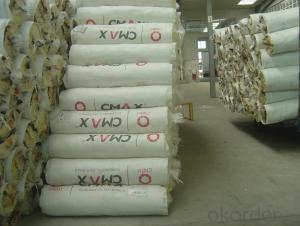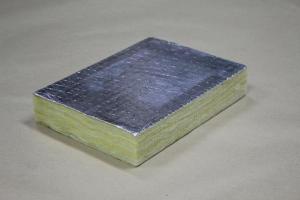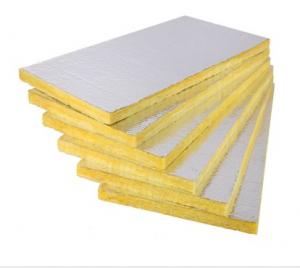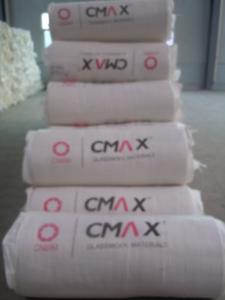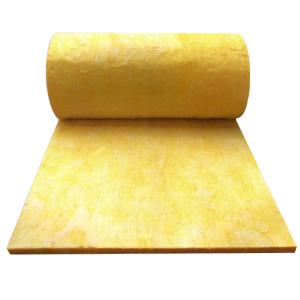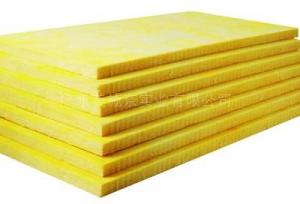Glass Wool Blanket - Good Quality for Building
- Loading Port:
- Shanghai
- Payment Terms:
- TT or LC
- Min Order Qty:
- 10000 m²
- Supply Capability:
- 100000000 m²/month
OKorder Service Pledge
OKorder Financial Service
You Might Also Like
Production Description
Glass wool blanket is in flexible form for ease of installation over large areas. Both products are available to order with a wide range of density and thickness, and with various types of facing applied.
Standard Size
Item | Unit | Index |
Density | Kg/m3 | 10 - 48 |
Thickness | mm | 25-150 |
Width | mm | 1200 |
Length | mm | 5000-30000 |
Remark:
Other sizes available upon request Facing materials can be applied upon request
Technical Data
Item | Unit | Index |
Average Fiber Diameter | μm | 5-7 |
Water Content | % | ≤1 |
Grade of Combustibility | Non-Combustible Grade A | |
Thermal Conductivity ( 25℃) | W/mK | 0.038- 0.045 |
Reshrinking Temp | ℃ | ≥250 |
Hydrophobic | % | ≥98 |
Moisture Rate | % | ≤5 |
Noise Resistant Coefficient (NRC) | 0.75 | |
Slag Inclusion Content | % | ≤0.3 |
Application
Glass Wool are widely used in public, commercial and residential buildings as well as industrial plants, for applications such as roofing, external wall, partition wall and floating floor to provide fire protection, thermal insulation, acoustic control and condensation control.
FAQ
Application: Low /medium pressure central HVAC system and ventilation system.
Application: Used in gigh pressure,low pressure air conditioner and ventilation system,easy installation, anti-temperature and inflaming retarding etc
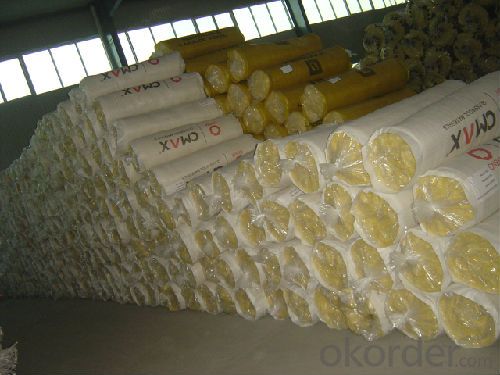
- Q: What kind of glass wool is used for most buildings?
- Ask the dealer for product descriptions, and you can search its specifications and parameters and then design based on the performance specifications of specific products. I suggest you first determine which brand of thermal insulation cotton to use, or check if the number is in the tolerance range of national standards of the manufacturers, of course, it is a relatively wide range. I recommend Owens Corning ultrafine glass fiber insulation cotton.
- Q: What are the differences between glass asbestos and glass?reinforced?plastics?
- Asbestos is the general term of natural fibrous silicious minerals, which is a silicate mineral fiber fireproof?panels of construction materials. It is the only natural mineral?fiber with good tensile strength, thermal insulation and corrosion resistance performance, thus it has a wide application. There are many kinds of asbestos, the three most common ones are chrysotile asbestos(white asbestos), amosite asbestos(brown asbestos) and crocidolite asbestos (blue asbestos), and the chrysotile asbestos is the most abundant, and commonly-used one. Glass fiber is an excellent inorganic nonmetallic material. The original name in English: glass fiber. Glass balls or discarded glass are raw materials of it. And it is rocessed by techniques of high temperature melting, wire drawing, winding, and weaving. Finally, it becomes various products. The diameter of glass fiber's monofilament is from a few microns to twenty microns which equals to the 1 / 20 to 1 / 5 of human hair. Each bundle of fiber precursors is composed of hundreds of or even thousands of monofilaments. Usually, it is used as reinforced materials,electric insulation materials, thermal insulations and circuit boards in complex materials, and is widely used in various fields of national economy. Glass fibers are twistless roving and textile gauze with different specifications and uses which are twisted. There are two kinds, namely alkali-free (R2O<0.8%, Code E) and alkali (R2O12.0±0.47%, Code C). They are mainly used as reinforcing materials for hand lay-up, lamination, winding and spraying formation of glass?reinforced?plastics, as well as are contributors to the production of electronic insulation, composite, and fireproofing glass?fiber products.
- Q: Can Kunnai glass wool board and sound absorption blankets be used to maintain sound insulation in hotel floor? Can it decrease half of the noise? How to install?
- No estimate half, but still able to play a sound effect
- Q: Glass wool can be used at zero degrees
- Ultra-fine cotton resin products, -120 ~ 400 ℃
- Q: Whether the rigid section of aluminium foil glass wool can be twined with glass fiber cloth
- This is not necessary, it depends on the place the shell is used, the best thing is to add a layer of insulation tape.
- Q: Can high-temperature glass wool be on fire?
- Glass wool belongs to class A nonflammable material.
- Q: Does glass wool equals to rock wool?
- It has advantages of good sound-absorbing , welding and thermal insulation performance, small bulk density, chemical stability, corrosion resistance, and belongs to glass in terms of chemical composition. It is an man-made inorganic fiber, cotton-like material. Glass wool belongs to glass fiber with low thermal conductivity which is a mineral wool. Rock wool is also known as asbestos. Glass wool fiberizes molten glass.
- Q: Glass wool products can be used for insulation layer
- Glass wool can be anti-aging effect is great
- Q: What's the difference between the rock wool and glass wool board?
- Glass wool belongs to a category of glass fiber, is a kind of man-made inorganic fiber. it takes quartz sand, limestone, dolomite and other natural mineral as the main raw materials, and is melt into glass after adding some soda, borax and othe chemical raw materials. In melting state, it's transfered into flocculent fibers with the aid of the external force, fiber and fiber interchanges and intertwins with each other, presenting many tiny gaps. This gap can be regarded as pore. Therefore, glass wool can be regarded as porous materials, and has good thermal insulation and sound absorption performance. Glass wool is made by making the molten glass fibrosis and making cotton material, chemical composition is glass, a kind of inorganic fiber, it has good shape, small volume density, low thermal conductivity, thermal insulation, good sound-absorbing performance, corrosion resistance, stable chemical performance. Rock products take basalt as the main raw material, through high temperature melting, inorganic fiber is made by the high speed centrifugal equipment, add a special binder and swing it with the dust?laying?oil, change the fiber array structure by special equipment, and finally a new type of lightweight thermal insulation material is made after solidification and sizing. According to the different applications, it can be processed into rock wool board, rock wool seam blanket, rock wool pipe shell and other products.
- Q: Why use reflective paper for pipeline package? Such as the caliduct in home is wrapped with a layer of reflective paper outside a layer of glass wool.
- It is not reflective paper, and it is aluminum foil! Mainly used for heat insulation! You can wrap it with black cloth or garbage bag
Send your message to us
Glass Wool Blanket - Good Quality for Building
- Loading Port:
- Shanghai
- Payment Terms:
- TT or LC
- Min Order Qty:
- 10000 m²
- Supply Capability:
- 100000000 m²/month
OKorder Service Pledge
OKorder Financial Service
Similar products
Hot products
Hot Searches
Related keywords
